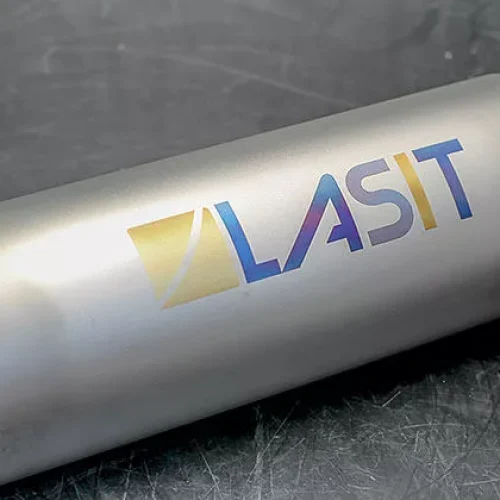We use the latest generation laser technology for professional markings on any type of metal!



Laser metal marking is an efficient and economical method of marking metals with a permanent, high-quality finish.
It uses a powerful laser beam to engrave and mark any type of metal, including stainless steel, titanium, aluminum and many others. The laser marking process is incredibly precise, with minimal thermal distortion and no burrs or other defects. Additionally, it produces a permanent finish, meaning your markings will last for many years.
It turns out to be a customizable system, with a wide range of fonts and logos that can be used to create unique and personalized designs. Plus, it’s easy to add serial numbers or other types of tracking to your finished product. All of these features make laser metal marking a great choice for any metal marking or labeling application.
A laser marker can engrave many types of metals, including stainless steel, aluminum, copper, gold, and silver.
However, the engraving ability of a laser marker depends on many factors, such as the type of metal, the thickness of the metal, the laser power and the quality of the laser marker. In general, lasers with higher power are able to engrave metals with greater precision and at greater depth.
It is important to note that some metals, such as titanium, can be difficult to engrave with a laser due to their high reflectivity.
Laser metal marking is an advanced and versatile technology used in a variety of industrial sectors to create precise, permanent, high-quality markings on various metal surfaces. LASIT, a leading company in the sector, offers innovative solutions for laser marking on metals, using cutting-edge technologies such as fiber lasers and MOPA.
Laser Engraving: This technique uses the heat of the laser to vaporize the metal, passing directly from the solid to the gaseous state. Laser engraving is deep, durable and ideal for applications requiring permanent part traceability.
Laser Etching: It is a rapid process that melts metal almost instantly, creating high-contrast markings. Less permanent than engraving, etching is suitable for thin sheet metal that requires less permanence of markings.
Laser Annealing: Used primarily on steel, titanium and stainless steel, laser annealing does not remove material but causes a chemical change beneath the surface of the metal, creating colored markings. This technique is ideal for surfaces that cannot be damaged.
Laser Ablation: This method selectively removes material from the solid surface in a controlled manner, useful for removing paint or thin films.
Laser Marking with Oxidation: This process does not physically alter the surface of the metal, but creates an oxide layer that takes on a black color in contrast with the underlying color.
Fiber and MOPA lasers offer numerous advantages for laser marking on metals:
The choice of laser marking technique depends on the application context. If you need to perform a large number of marking operations in a short time, engraving or etching are appropriate techniques. For working on titanium or ferrous metals, or when you want to remove as little material as possible, laser annealing may be the right choice. Additionally, it is critical to consider the desired pattern finish and costs involved when choosing the appropriate laser system.
In summary, laser marking on metals offers a variety of techniques to meet different industrial requirements, ensuring precise, long-lasting and high-quality markings. With the advanced solutions proposed by LASIT, companies from different sectors can benefit from this technology to improve the traceability and aesthetics of their products.

+39 800 821 577
sales@lasitlaser.com
Location
ITALY | Via Solferino 4, 80058
Torre Annunziata (NA) - Italy
POLAND | Ul. Fabryczna 34, 43-100
Tychy, Poland
SPAIN |
Calle Bari 55, 50197
Plataforma Logística Zaragoza
GERMANIA |
Im Stockäcker 7, 78194
Immendingen
REGNO UNITO |
Unit 6 Blythe Valley Innovation Centre
Central Boulevard
© 2024 LASIT Sistemi e Tecnologie Elettrottiche S.p.A. | P.Iva 02747991210 | C.F 01803670643 | Chi Siamo | Contattaci Privacy Policy.